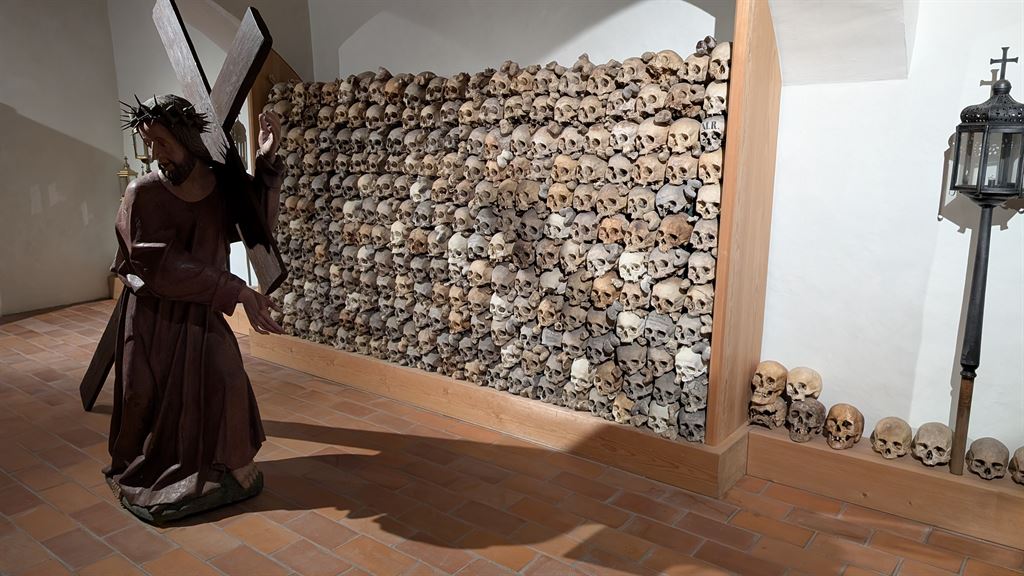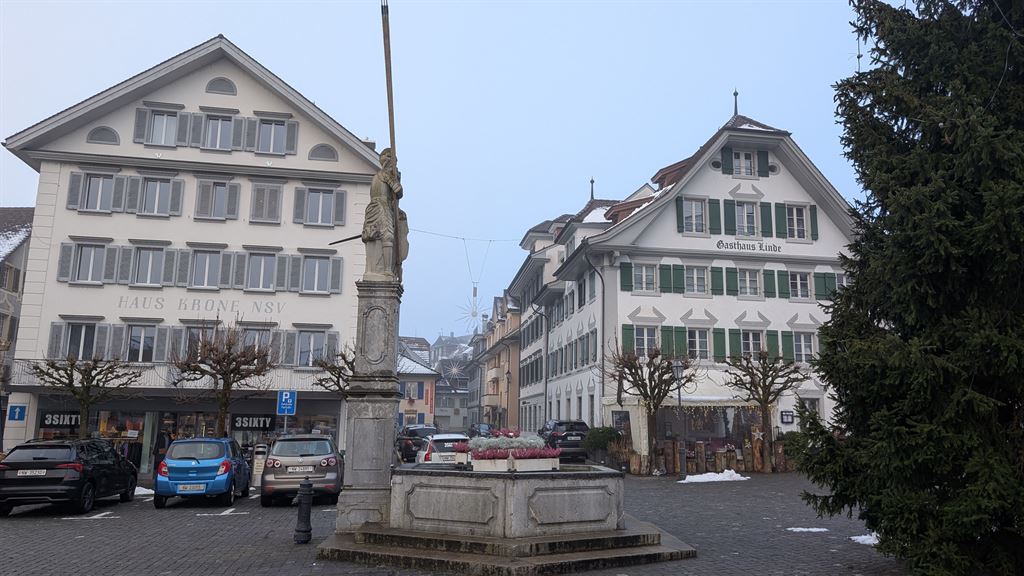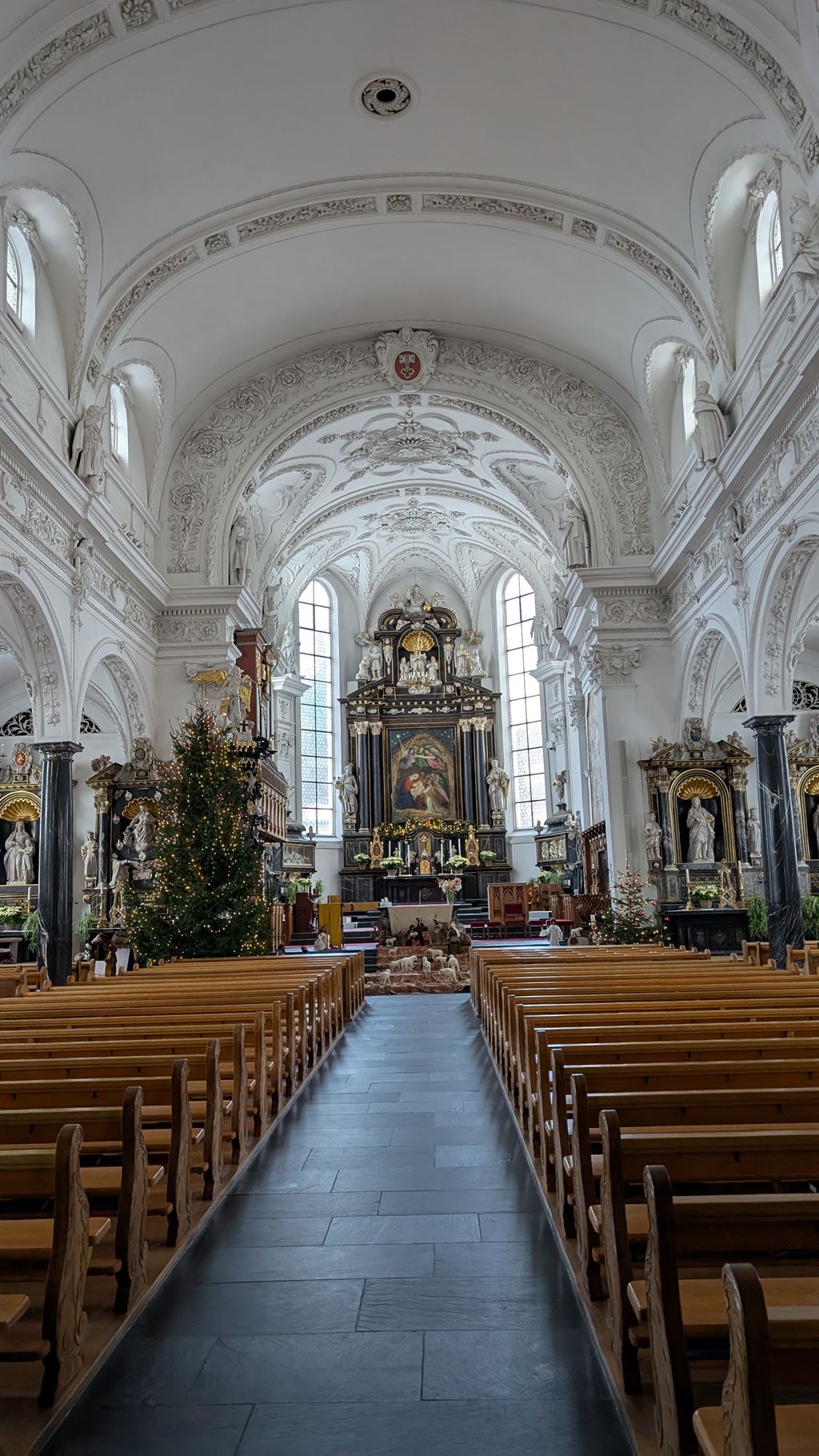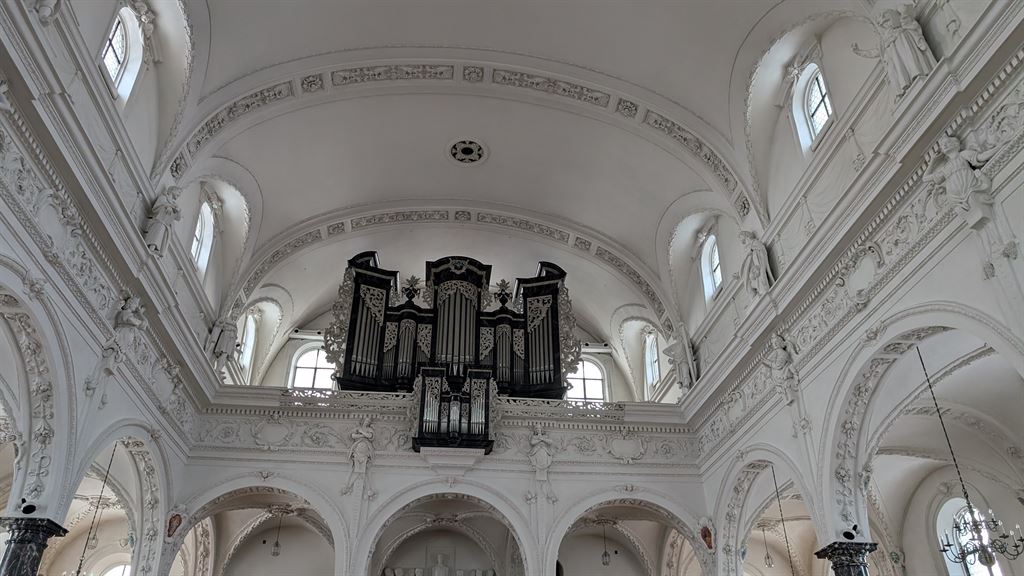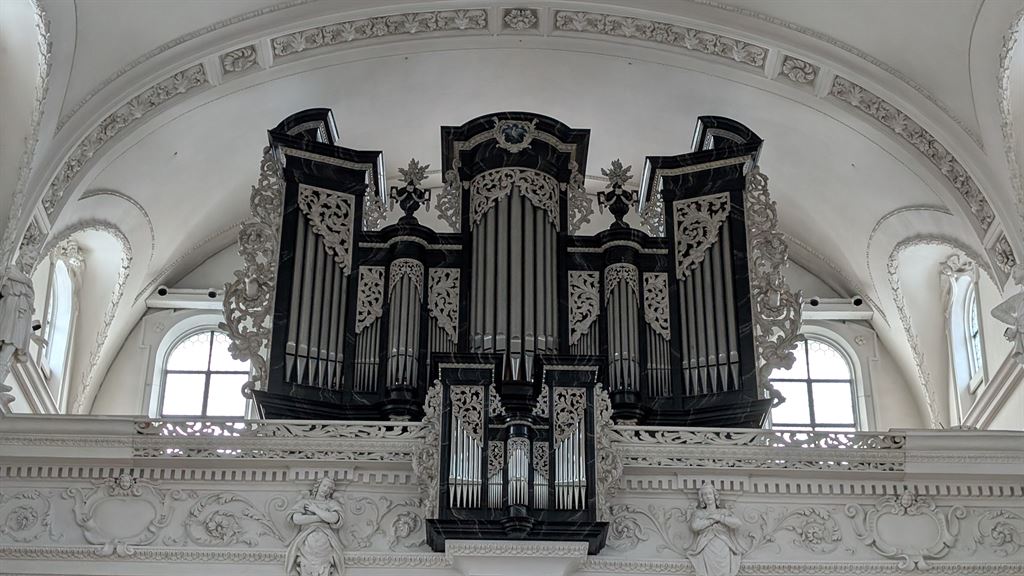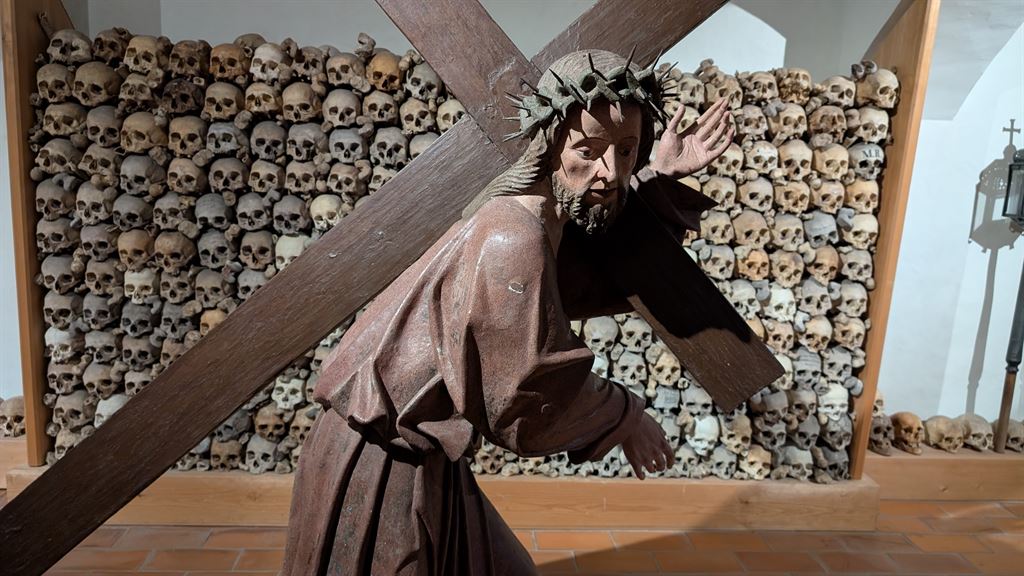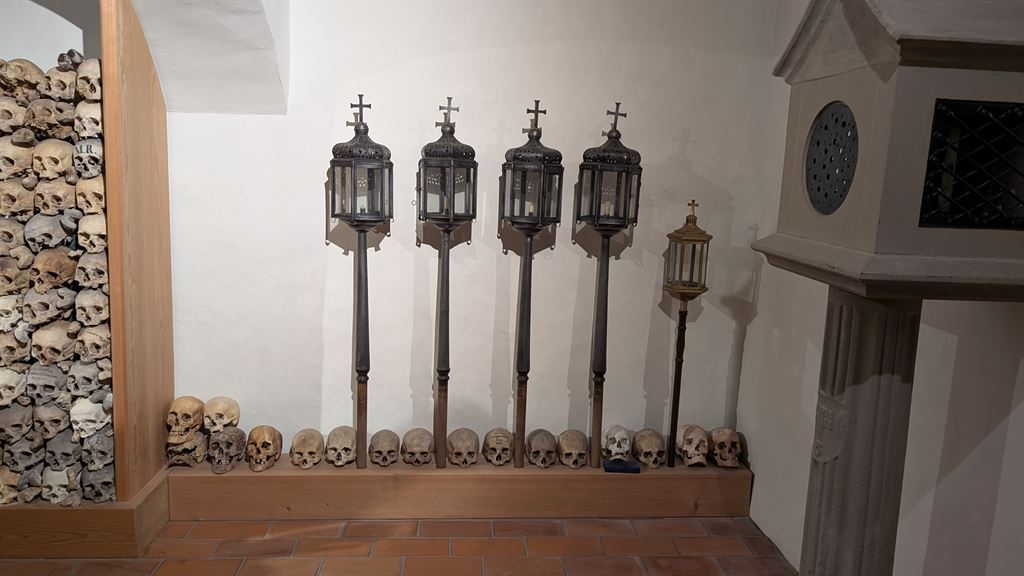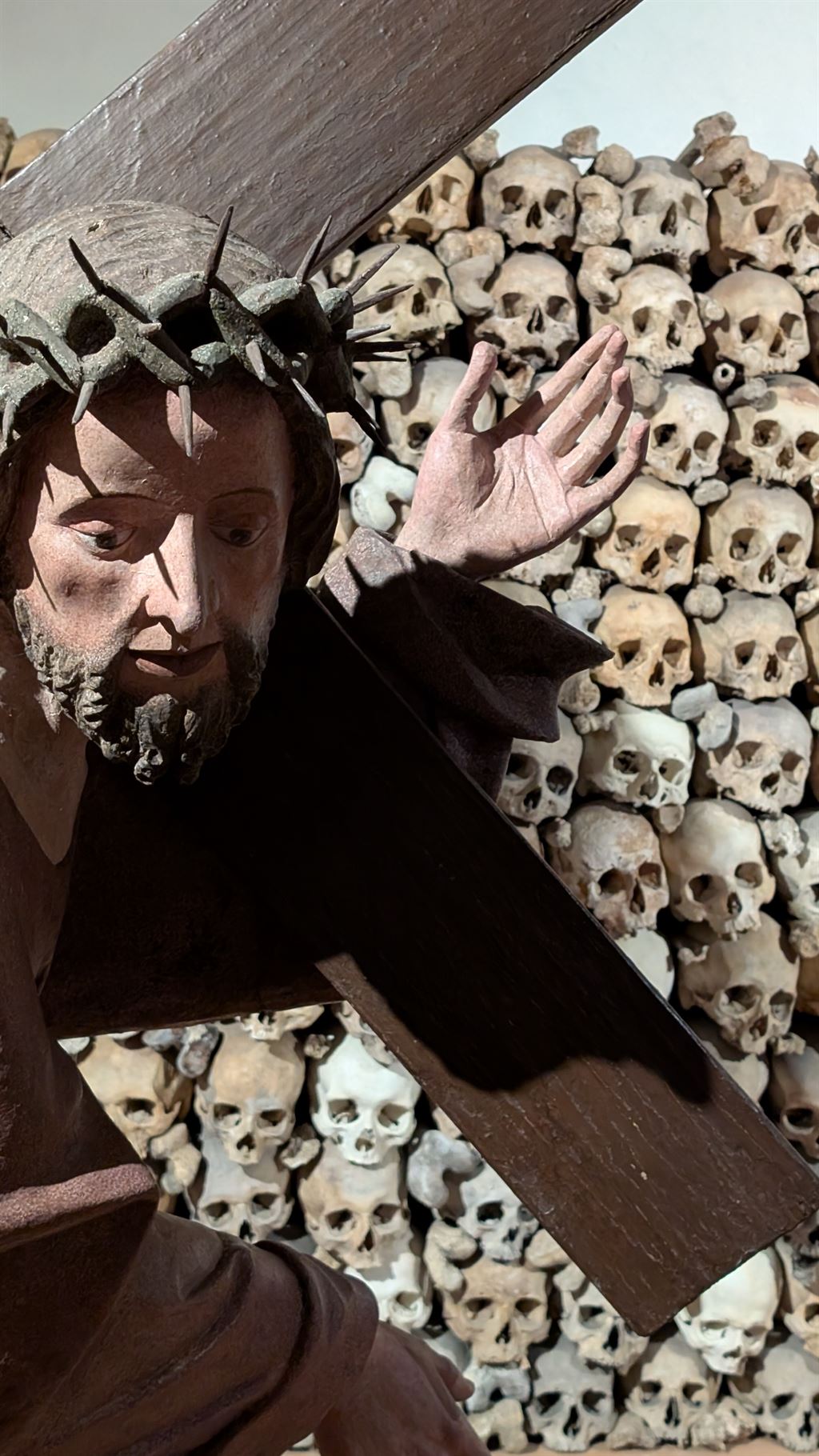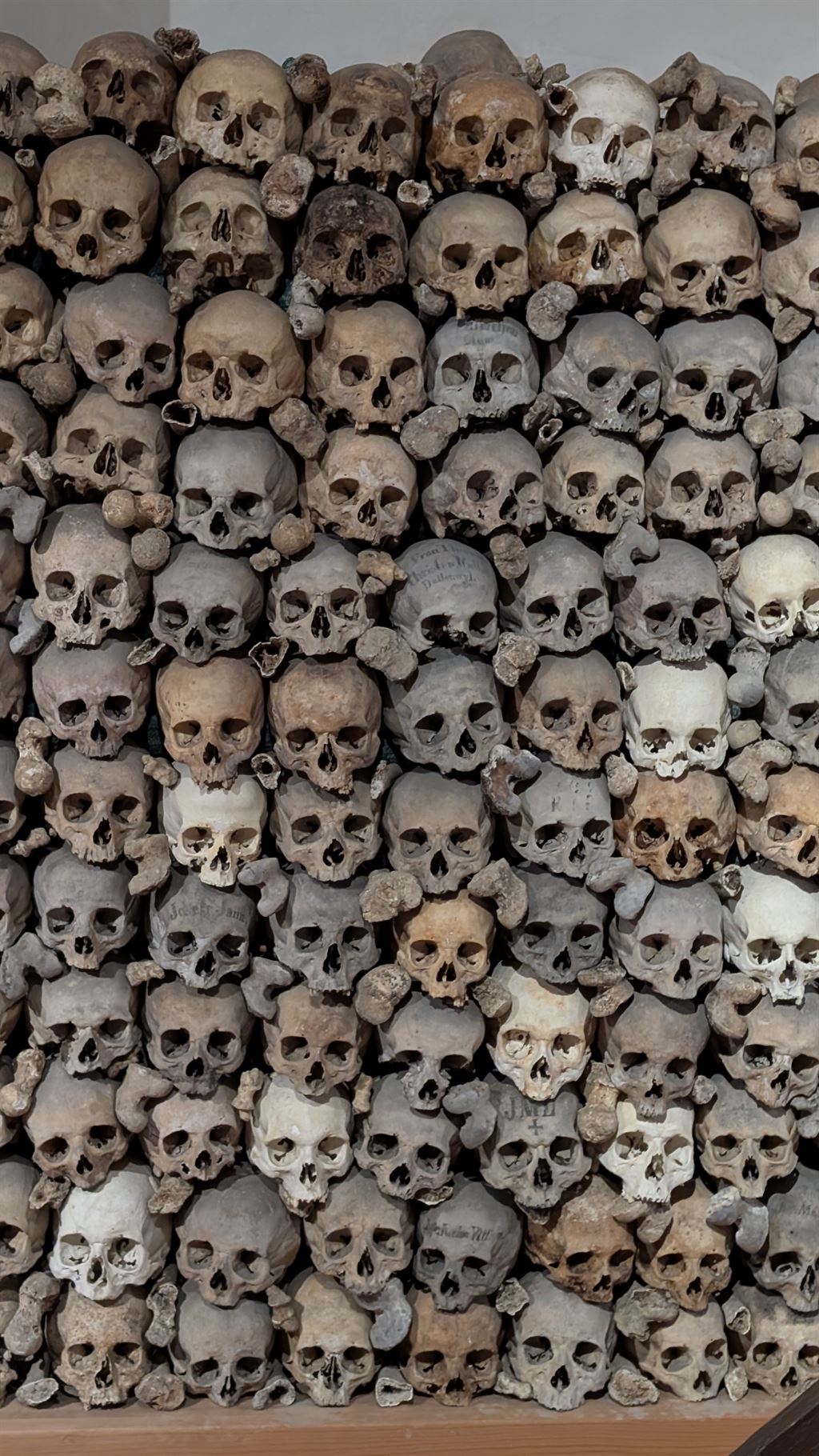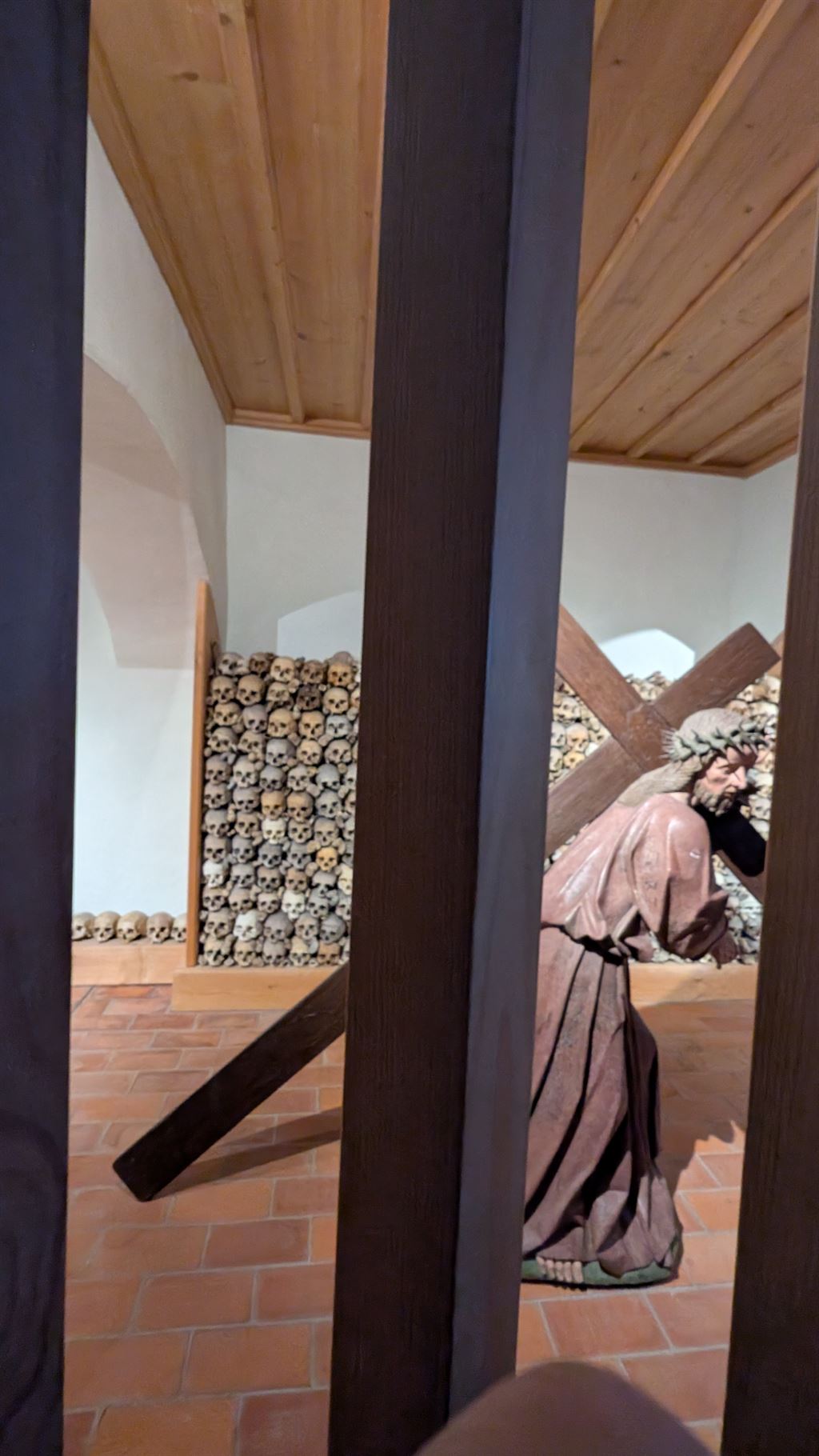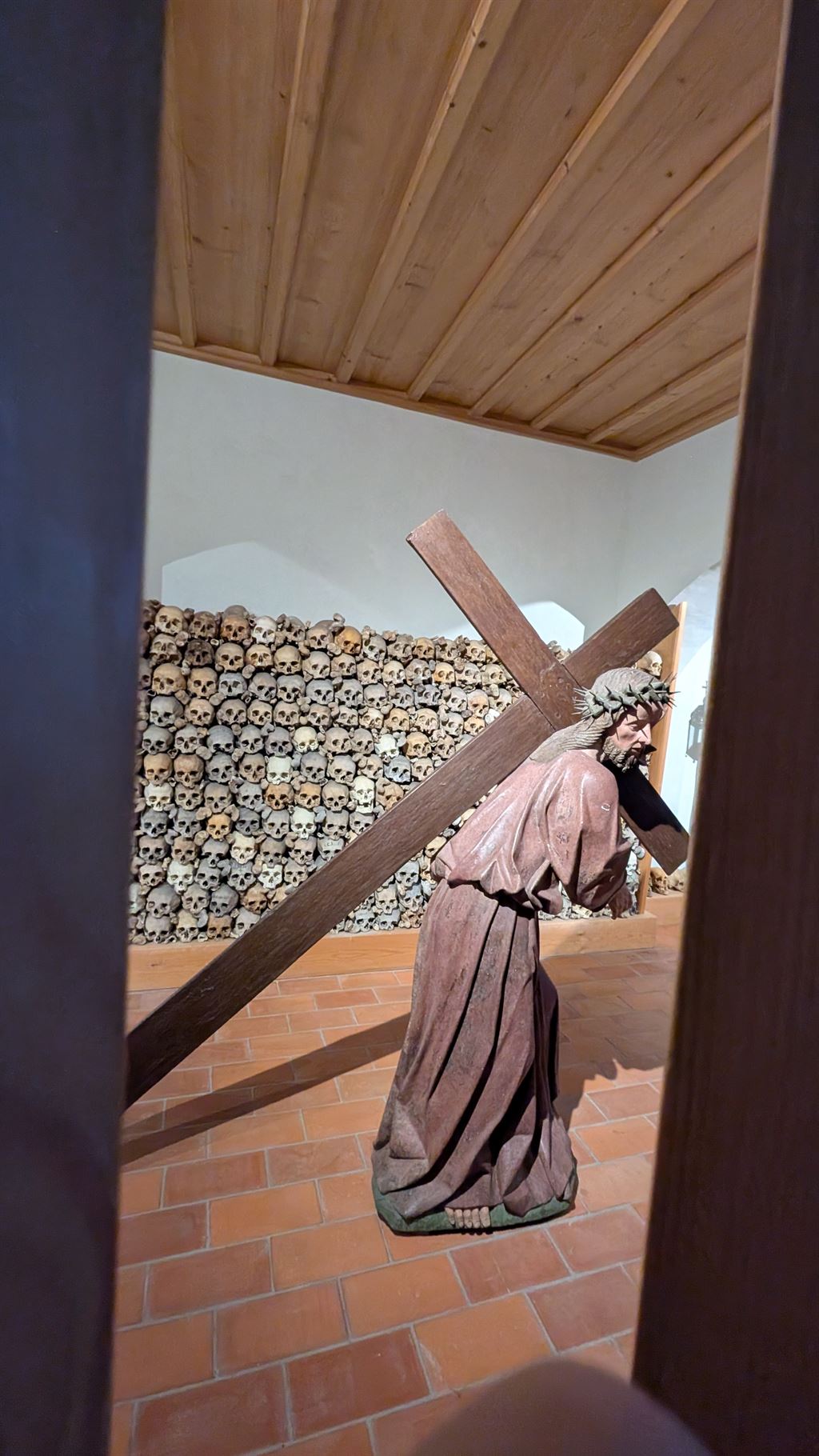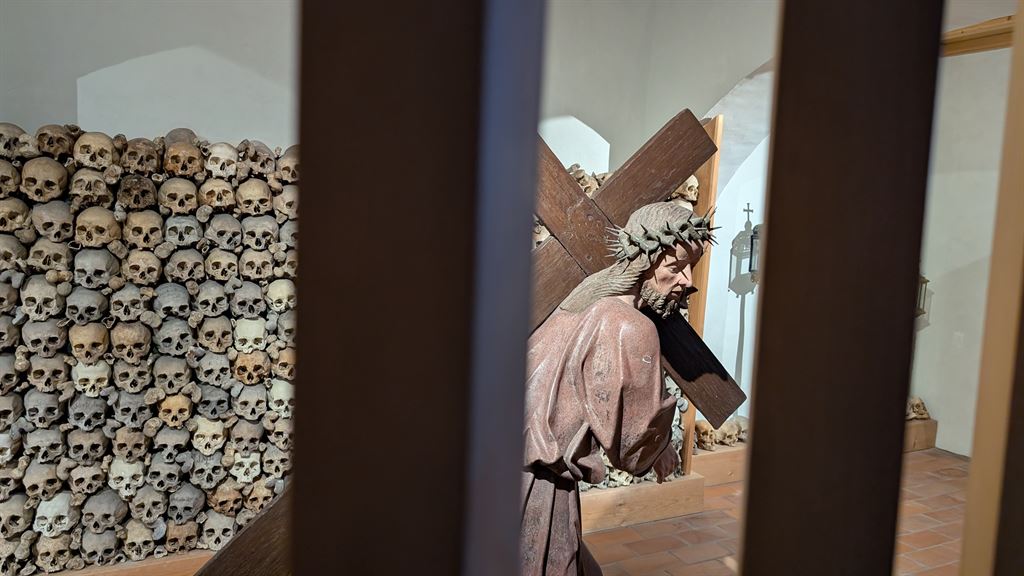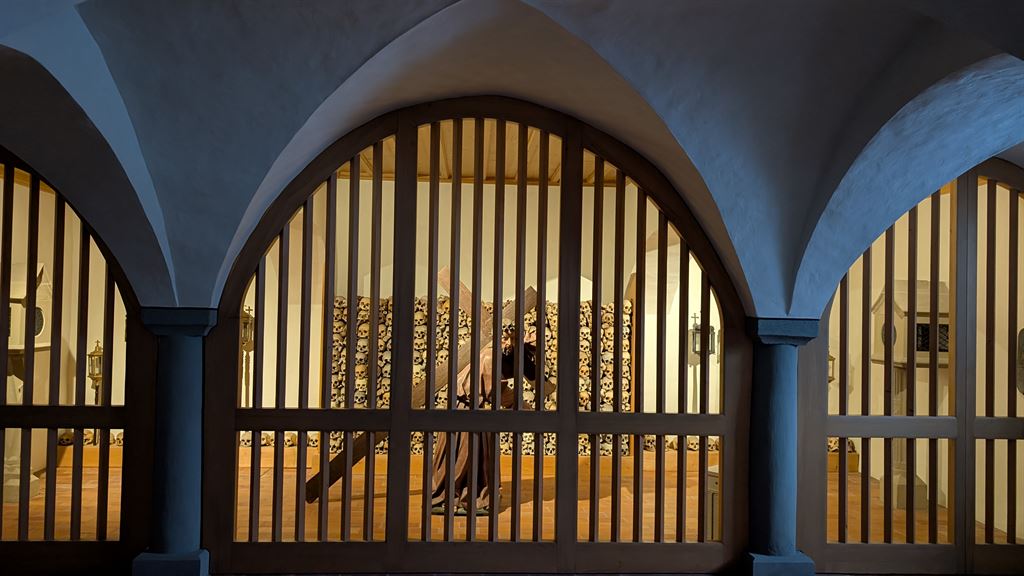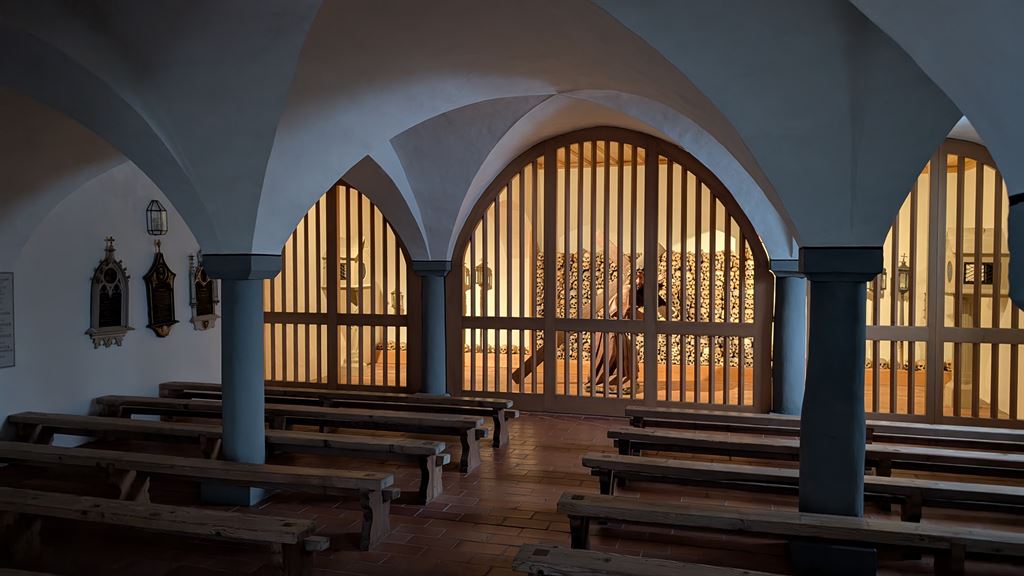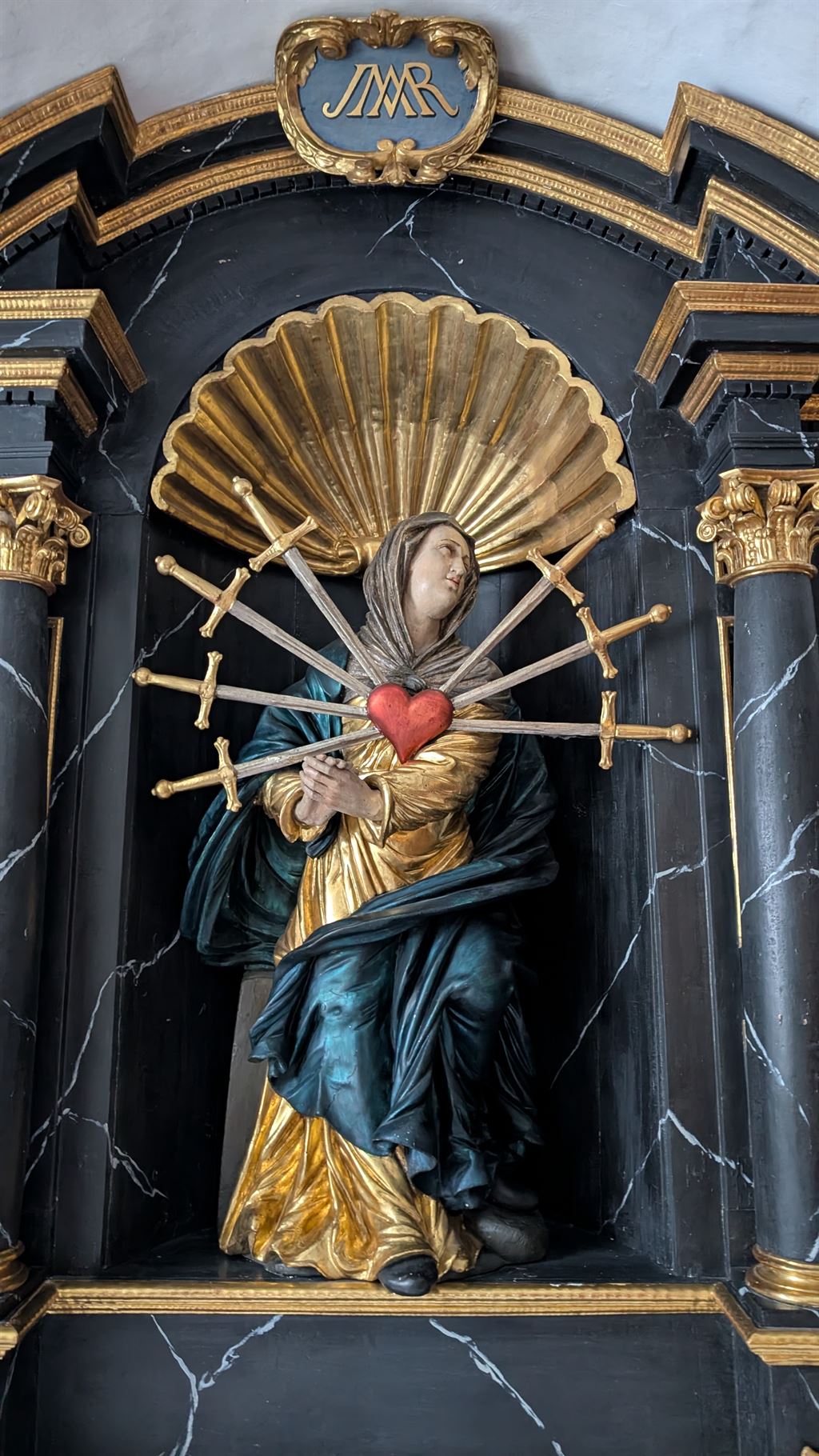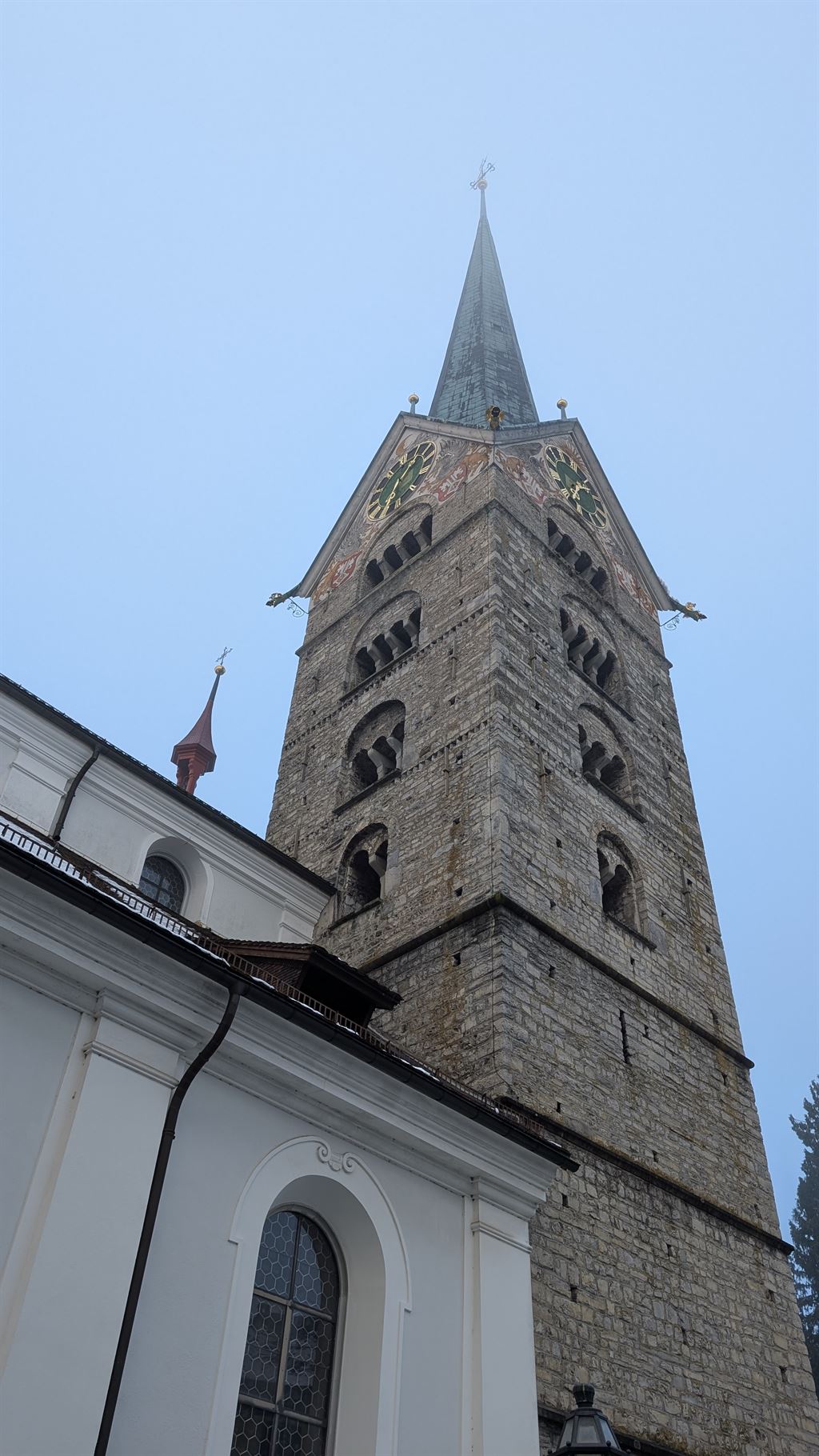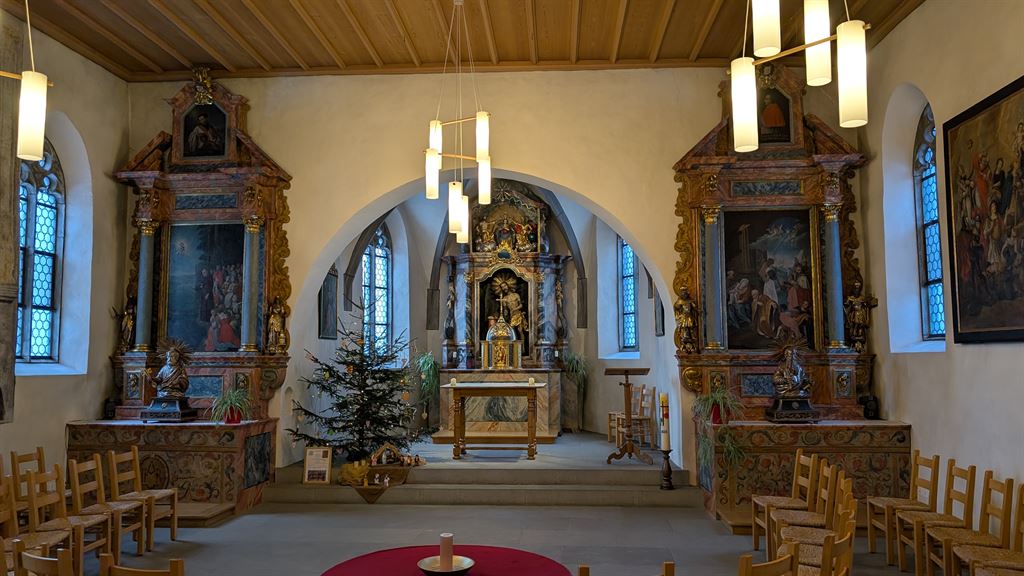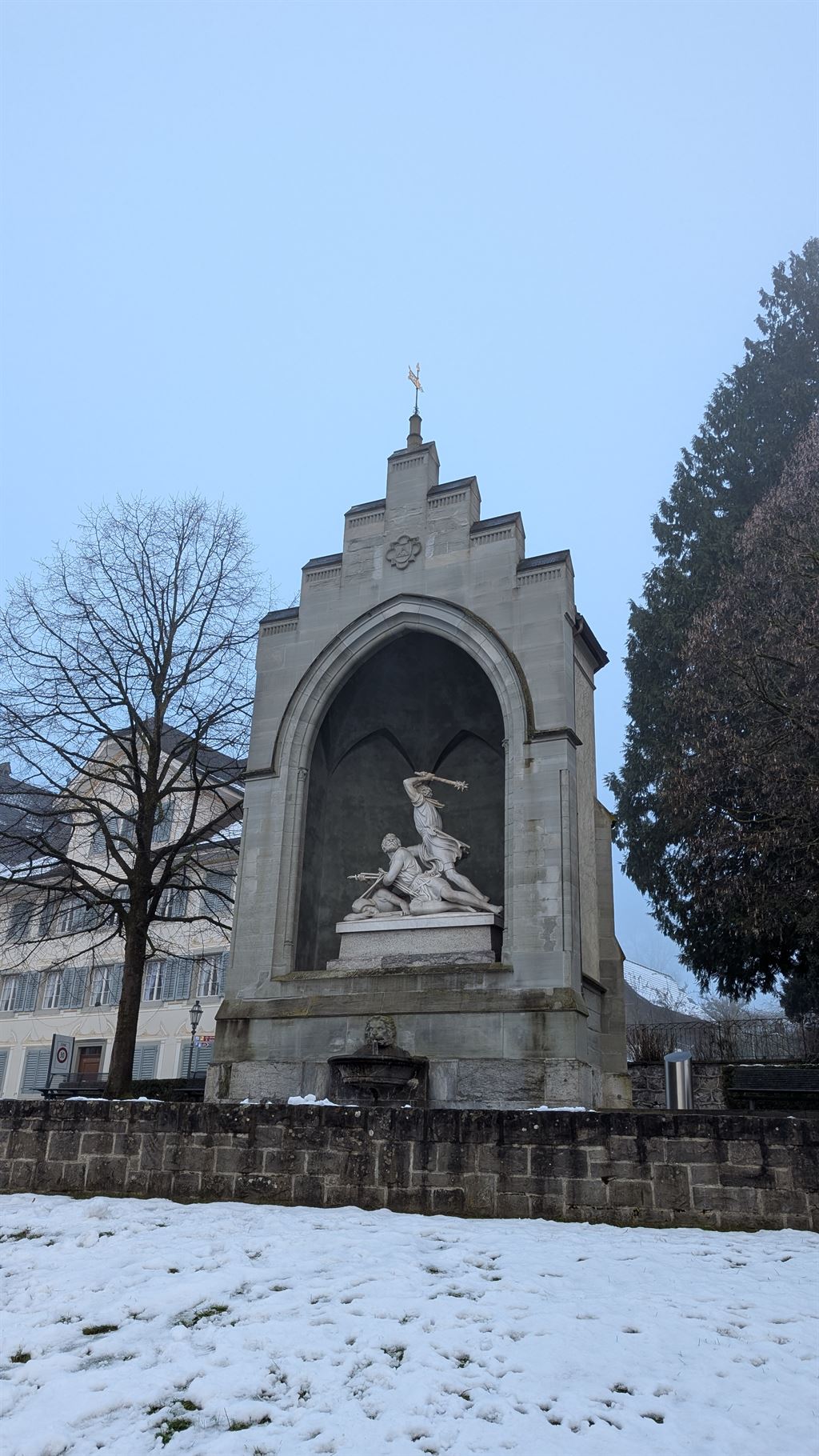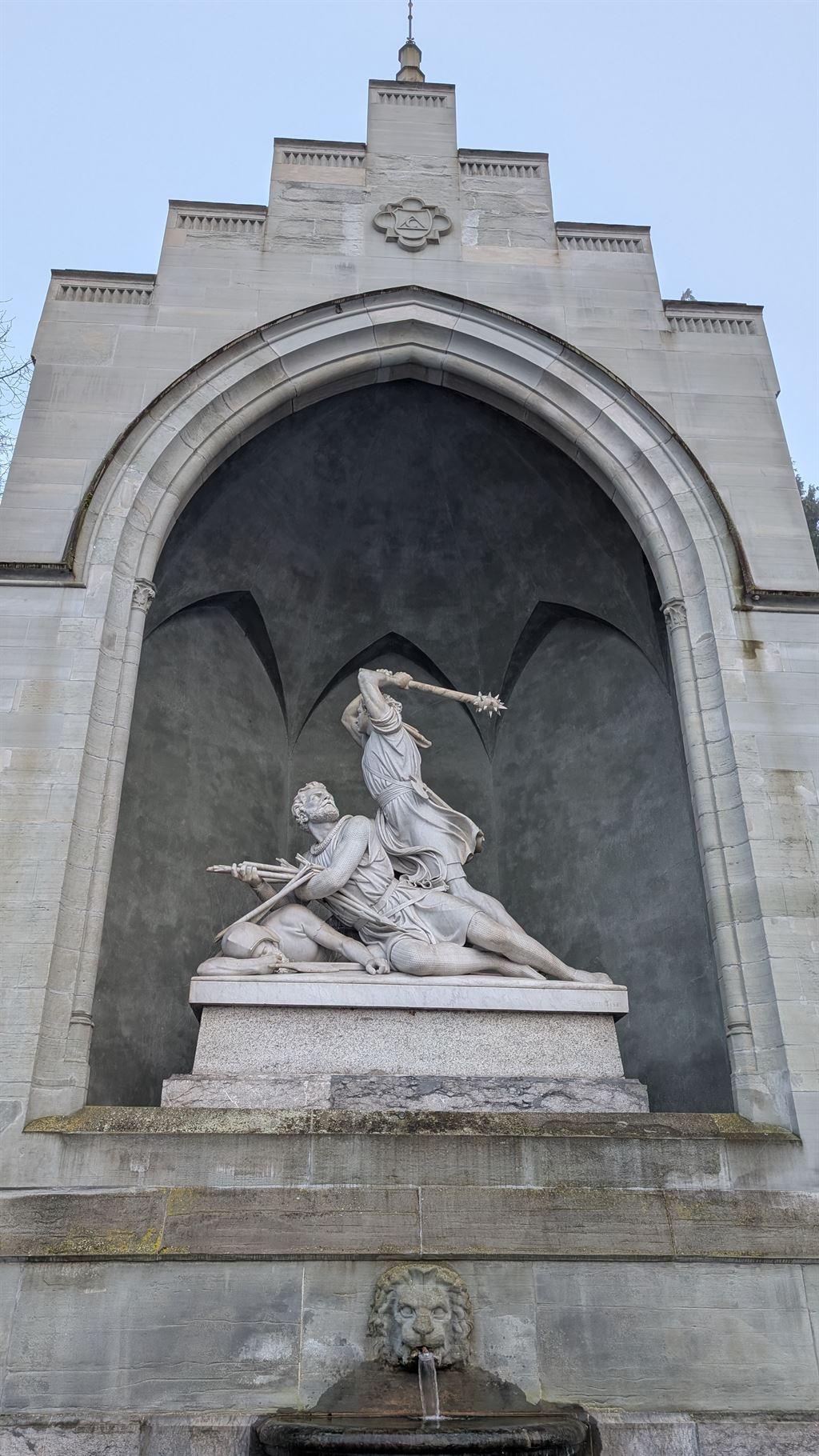In the quiet shadow of the Church of St. Peter and Paul stands the Stans ossuary, a building that has focused on human mortality for centuries. Built in 1482 and expanded with an upper floor in 1560, it was once not only a place for storing the dead, but also a place of devotion and hope for eternal life.
While the basement was used for the careful storage of the bones, a cult room filled with sacred significance rose above it. Behind the filigree wooden grille, an impressive wall of skulls is revealed, a silent witness to transience. To the right of the entrance, a relief draws attention, depicting the torments of purgatory in a moving way.
The lower ossuary is a room that forces you to think with its skull wall. Here, where countless skulls have been artfully layered, time stands still. Some skulls bear numbers or names, silent witnesses to a life that once breathed and loved. "No two skulls are the same," says church guide Klara Niederberger. "The engravings on some heads reflect the desire not to get lost in the crowd - perhaps also a hope of being recognized on the day of resurrection."
A narrow window slit casts light on the wall of skulls, while the "Poor Souls Light" burns next to it - a symbol of belief in life after death. In front of the wall of skulls stands the life-size figure of Christ carrying the cross, created by Jost Zumbühl, whose presence offers both comfort and warning.
Anyone who leaves the ossuary is confronted with further reminders of mortality. On the outside wall of the church, the Ars Moriendi fresco commemorates the victims of the Nidwalden uprising of 1798. In the immediate vicinity, the Winkelried memorial and the fountain sculpture "Death and the Maiden" bear witness to the confrontation with death and memory.
The ossuary in Stans is more than just a room – it is an invitation to reflect on one’s own mortality and to look beyond earthly life.
Legends and Stories from the Crypt
In 1920, the Stans ossuary was a gloomy place, filled to the ceiling with bones and skulls that had been resting in the semi-darkness of the crypt for centuries. The musty smell of transience hung heavy in the air, and no one dared to disturb the peace of the dead. But one day, youthful exuberance drove two young men to make a gruesome bet: who would have the courage to take a skull out of the crypt?
With a trembling lantern in his hand, the first boy crept into the claustrophobic darkness. The shadows of the skulls seemed to move in the flickering flame, as if the spirits of the dead were looking over his shoulder. Shakily, he dug a bony hand into the pile and pulled out a skull. His fingers felt the cold, smooth surface when suddenly an icy voice rang out from the darkness:
“Leave him alone, he is mine!”
The boy froze, his heart racing like a drumbeat in the silent tomb. He couldn't believe what he had heard - surely a prank from his friend! Despite his fear, he gathered courage, dropped the first skull and reached for a second one. The same voice rang out again, even more insistent, even more sinister:
“Leave him alone, he is mine!”
Sweat ran down his forehead, his hands shook, but his pride did not let him back down. He grabbed a third skull and whispered hoarsely: "This skull belongs to me now! You're not going to wear three scabies on your neck, are you?"
A cold laughter seemed to echo through the tomb, and the lantern flickered as if in the wind, although the air was still. The boy fled, clutching the skull tightly, vowing never to return. But the skull wall seemed to haunt him from then on, in nightmares that haunted him every night.
It is said that whoever goes down into this tomb and steals a skull will hear the same voice over and over again - and will never find peace again. To this day, a quiet whisper is said to echo through the chambers when the light fades: "Leave him alone, he is mine..."
Access
The ossuary is freely accessible.


